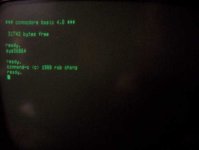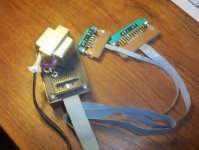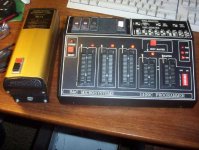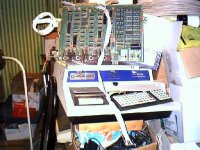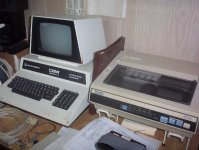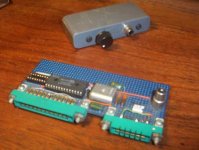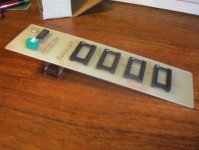I always wondered what these EPROM burners looked like!
Tez
PROM programmers like the Data I/O Model 29B were used in the engineering departments to fuse parts for experimental purposes (breadboards) or engineering model designs (prototypes). For production runs, parts would be procured from a distributor pre-programmed to your specification. Or if the run was very large, a ROM mask would be made.
The Model 29B was replaced around 1990 with the UniSite model which was more adapted for the higher speed and smaller size (surface mount) of the newer devices.
Of course this made the 29B obsolete and their resale value dropped like a rock. But for buffs of old hardware, they are perfect for programming the old +5 V dual in-line package (DIP) parts.
One real problem to note is that Data I/O upgraded their firmware often to add capability for new PROMs, so there are many versions (V numbers) of firmware not only in the main frame box, but especially in the UniPak (for PROMs) and LogicPak (for PALs) adapters as well as the in the little Program/Test (P/T) Adapters that go on the LogicPaks.
This was not a problem when the 29B was in production, if the user paid for the update service, they received new firmware (PROMs) for their machine on a regular basis. For a large company like Rockwell, the Data I/O representative would even come by with the mod kit and install them for you. But obviously some users did better than others at keeping their units at the latest version. When the 29B went obsolete, tons of them went on the market, unfortunately all at an unknown version levels.
For instance even to program very old parts like the PET EPROM (2532) or the 2732/2764 type EPROMs, one needs a UniPak of V07 or better. A Select Code EF will display the V level of the UniPak. I’m not sure of the last version of the UniPak, at least V018 or more. Even more problematic is for newer parts say like UV erasable AMD C22V10 PAL. For that, one needs a fairly late version (V009) of the 303A-011 P/T Adapter. If you get one on ebay and it turns out to be a V007, you are out of luck.
Be even more careful of older Data I/O products like the Model 19 or 29A as they will invariably have old firmware.
This is probably more than you ever wanted to know about the 29B, but it might save someone a problem.

